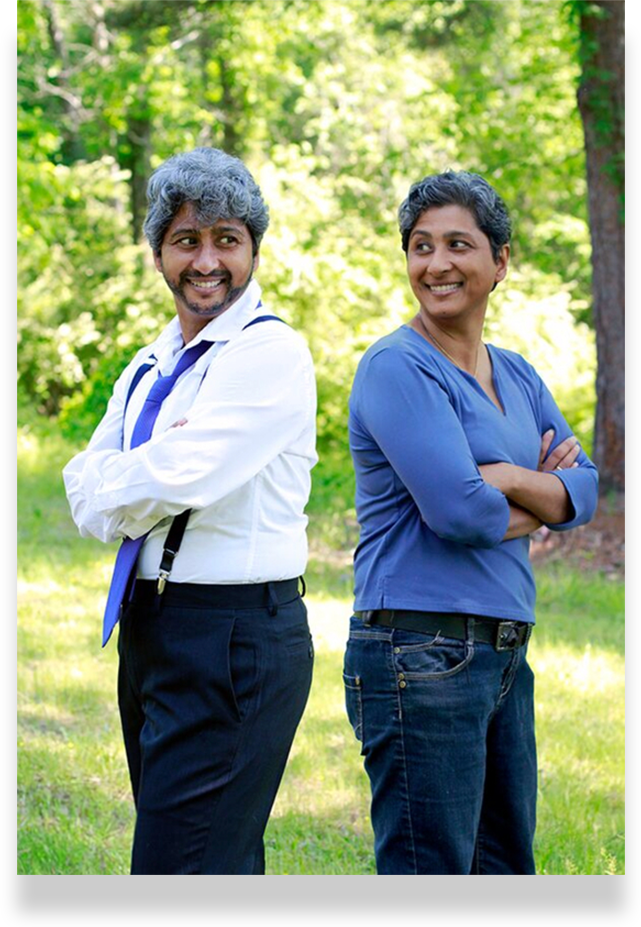
To continue that tradition, Curve recently put out a call for photographs by and of LGBTQIA+ women. “This is what a ____ looks like” was the prompt offered to those who wanted to enter the Curve Photo Contest of 2023. Creativity, self-expression, and vibrancy were the recommended criteria for selection. The submissions were rich, diverse, surprising, original, and honored the Curve tradition of inviting photographers and image makers to represent the many facets of identity in our community. Here is the background behind some of the photos.
Honorable mentions
RJ Samuel (she/her)
How you identify: Lesbian woman
Photo title: “This is what a lesbian woman of color exploring drag looks like”
Camera/technique: Photos taken by Little Phish Photography for the specific purpose of creating this outcome. Digitally altered by me to place my two personas together in the same photo.
Artist’s statement: I was setting up a concept called ‘Pets in Drag’ for an improv show and have other photos of me in my drag king persona holding my dog who was wearing a bowtie. I had the photographer friend who was there to do an author headshot photo also take some other photos. This particular photo that I edited together was to show two of many sides of me as I had just published a novel at the time, An Outsider Inside, that explored gender identity, and various -isms and belonging in different societies.
Connect with RJ Samuel here: rjsamuel.com
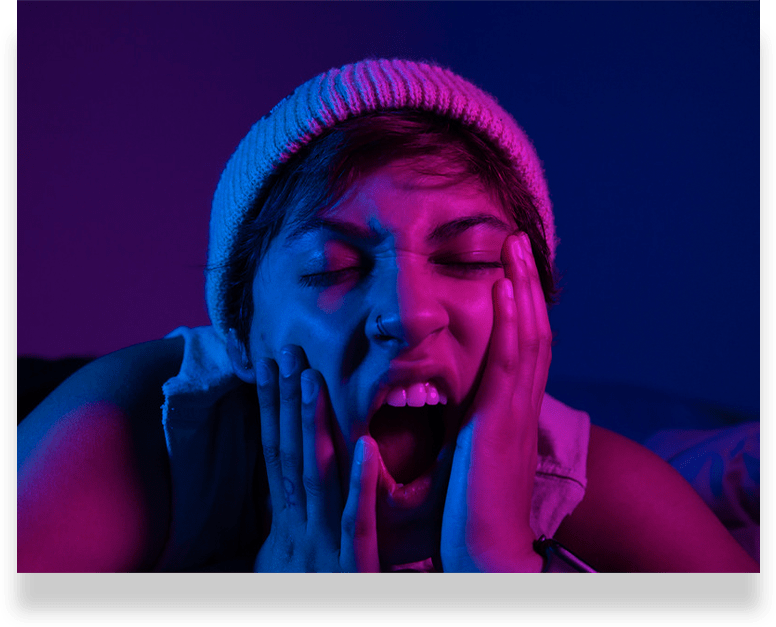
Jules (she/they)
How you identify: Queer Latina
Photo title: “HOME J.D.P.”
Camera/technique: Canon EOS RP Mirrorless Camera with RF 24-105 mm – RGB Lights
Artist’s statement: This photo is part of a larger project titled ‘HOME.’ I wanted to portray how home is different for queer people by photographing the subjects in a setting which they would describe as ‘feeling at home’. For my self-portraits, I wanted to show the duality of myself. Playing between masculine and feminine, not only through the poses themselves, but also with facial expressions and lighting. Feeling at home can take on so many different meanings. From places to people to your own body. Feeling at home in my own body is something I am still trying to learn, something I am still struggling to feel comfortable in. By allowing myself to play with the feminine and masculine, I can allow myself to coexist. Not one or the other, but both. To live authentically in a body that I strive to call home.
Connect with Jules here: julesdiazpetta.com
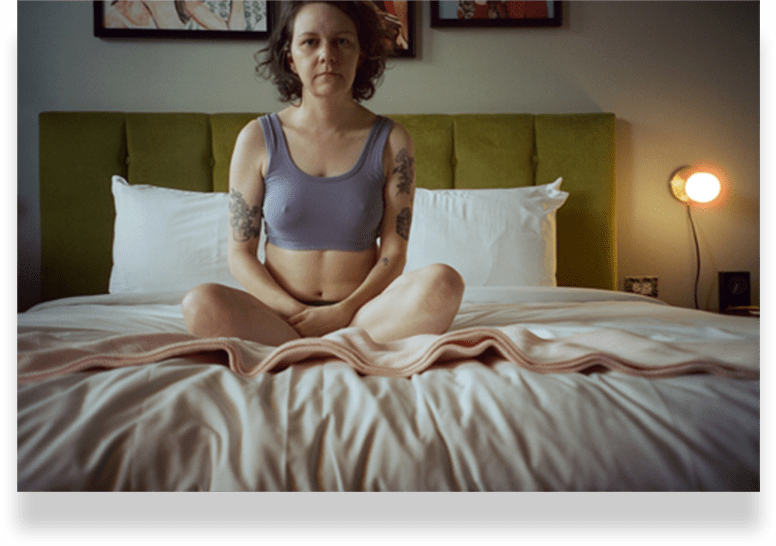
Victoria Rey (she/her)
How you identify: Queer
Photo title: “This is what a queer, grieving eldest daughter looks like”
Camera/technique: Canon 80u point-and-shoot camera propped up on books and a hotel side table set to timer mode
Artist’s statement: I took this photo at the end of a trip to visit my family one month after my grandfather died. He was a diligent documenter of our family, creating a huge catalog of family photos. As we were preparing for his funeral, we witnessed the evolution of our family through his viewpoint, which is a practice I’ve picked up in my own life. This picture was the catalyst for starting a practice of taking one self-portrait every month to capture how I will shift and change throughout my life in the same way he did for our family.
My aim in taking this photo was to document myself and timestamp a soft moment in a week of chaos. I’d travel from Atlanta to Appalachia to Chattanooga in a whirlwind tour of family time, and just finished navigating Atlanta traffic taking my grandmother to my mom’s house. After settling into my hotel room, an impulse booking at Atlanta’s (infamous) Hotel Clermont, I took off my clothes and sat on the bed to try to decompress and cool down. When I look at this photo I feel transported to that moment and surprised by how I’ve moved through grief since then. Though this moment was really painful, I’m really glad to have it as a reminder of how far I’ve come.
Connect with Victoria here: victoriarey.me and on Instagram as @sting_rey
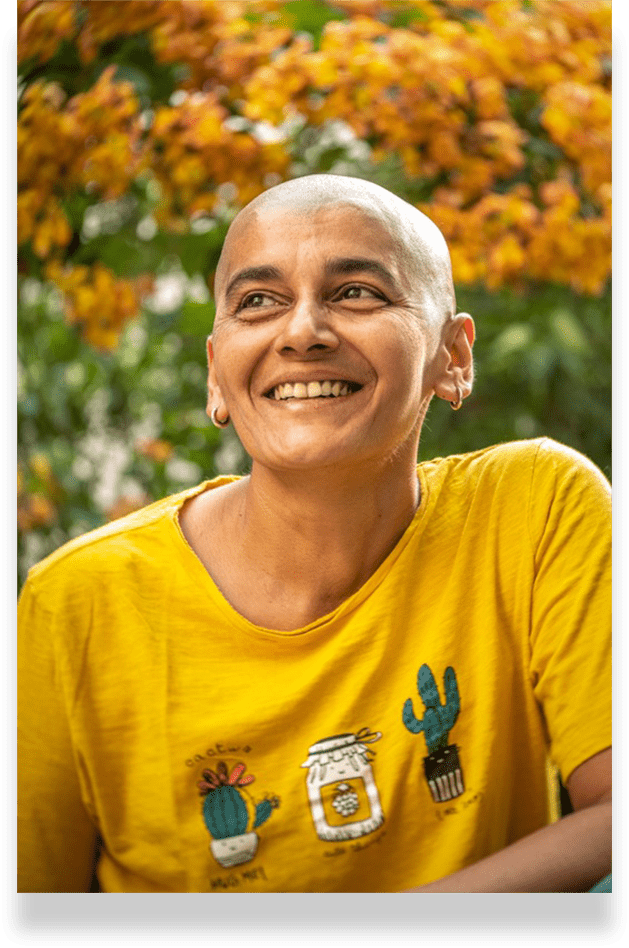
Winners
Swayambhu Soham (xie/xem)
How you identify: Agender
Photo title: “This is what Agender looks like: Being human matters to me more than being any gender”
Camera/technique: Nikon D850 +lensbaby twist 60mm lens
Artist’s statement: I’m bald by choice, post donating my hair in support of cancer patients. My bald head actually helped me identify my gender identity. As much as I was confident my bald head would take me to places one day, along with it, my identity too, a recognition. True to the saying ‘dream big. They have a funny way of coming true, my fancies at 50 got me out, proudly, loudly & baldly. I was out & loud. But this is a thunder.
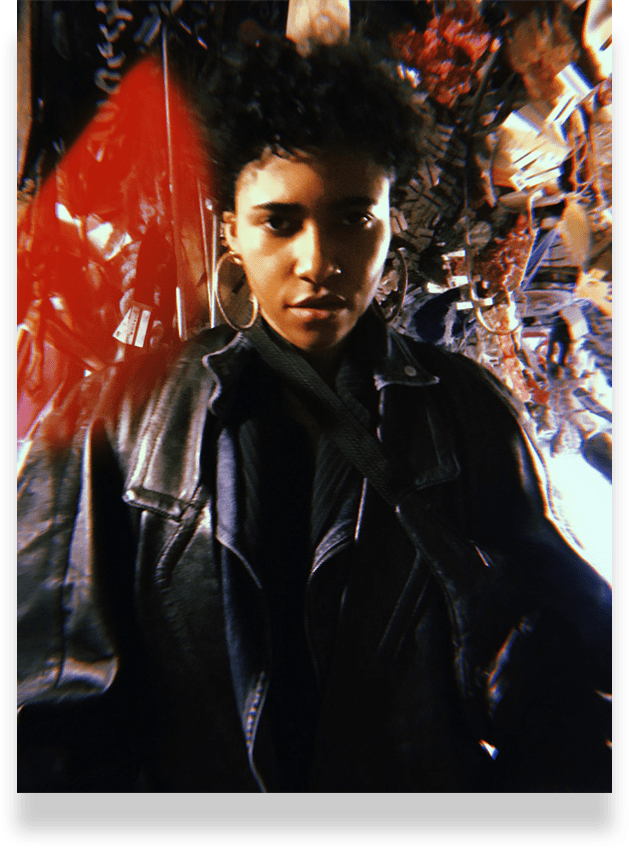
Loan Coppet (she/her)
How you identify: Lesbian
Photo title: “This is what a black lesbian looks like”
Camera/technique: Self-timer with my phone propped up on a chair, I usually take most of my pictures myself, when I have a vision/aesthetic visual in mind, I have to do it myself otherwise I won’t like it and as we say in French: « on n’est jamais mieux servi que par soi-même » (« If you want a thing done well, do it yourself »).
I used the HUJI Cam app: Basically, a vintage portable camera on a smartphone.
Artist’s statement: A picture’s worth a thousand words.
But to convey one’s identity in one singular image can be a difficult task.
I asked myself many questions and pinpointed many topics in order to submit the right picture.
How can you see me, understand who I am, with just one look?
The way someone dresses, stands, sits, moves can say a lot about who they are.
In the picture I submitted, you can see that I’m not wearing whatever happened to be in my closet that day.
Fashion is a tool that I like to use to express my identity, my sexuality.
I’m not wearing a leather oversized jacket just because.
I’m not wearing a fanny pack just because.
I’m not wearing gigantic hoops just because.
I’m rocking a curly pixie-cut just because.
And you’re not seeing it in the picture but I am not wearing Doc Martens and an array of rings just because.
I want to create a dialogue with the outside world, I want my clothing to explicitly say who I am.
Through history, lesbian fashion has evolved, transformed.
Clothing, accessories, shoes, they mean something.
As a lesbian, you know how to spot another lesbian in the street just by the way they’re dressed.
It’s Code. Fashion is code.
Through my « Look », I wanted to say : « Hello, it’s me, the Black lesbian. »
That’s what I was aiming for and I do believe I’ve achieved it.
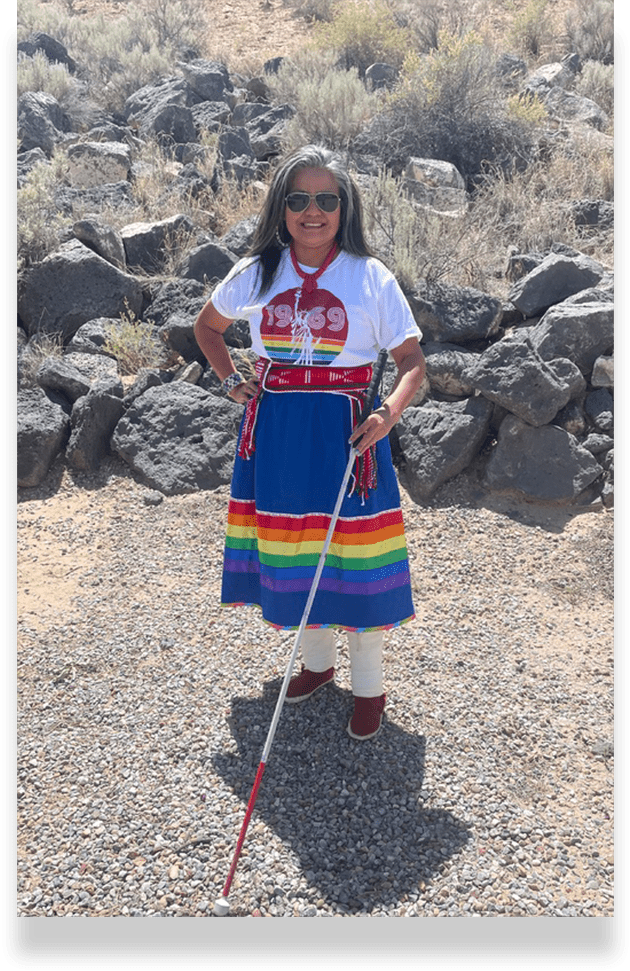
Sacheen Smith (she/her)
How you identify: Lesbian
Photo title: “Intersectionality being a Blind Dine’ Lesbian Woman”
Camera: iPhone
Artist’s statement: My life has been confronted with many obstacles being who I am. First and foremost, my blindness has given me daily obstacles. I am confronted with living in a sighted world where I find myself constantly having to advocate. Through the years I’ve become passionate about disability issues and trying to rid the negative stereotypes of blindness as being incapable or inadequate. Also, being Indigenous, we are underrepresented and are also confronted with environmental racism and many inequalities.
Helping to support and facilitate healing is my passion, and for over 20 years as a freelance artist, I’ve utilized a variety of modalities to promote healing in the form of art and advocacy. Artistic expression has provided me with the best possible outlet to pour something beautiful into others, the world around us, and myself. I utilize pens, pencils, markers, pastels, fabric paints and acrylics to add shape, lines, colors, tones, and textures; bringing life to flat surfaces. I charge my art to provoke conversations, vibrate sensations, and to promote positive transformation.
